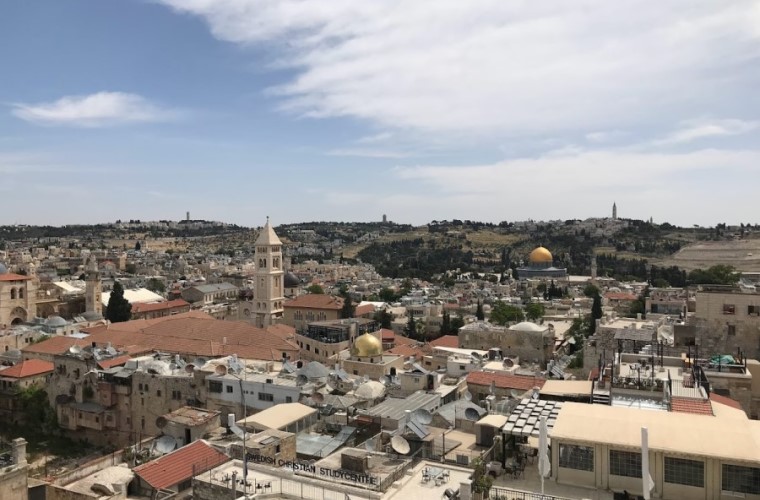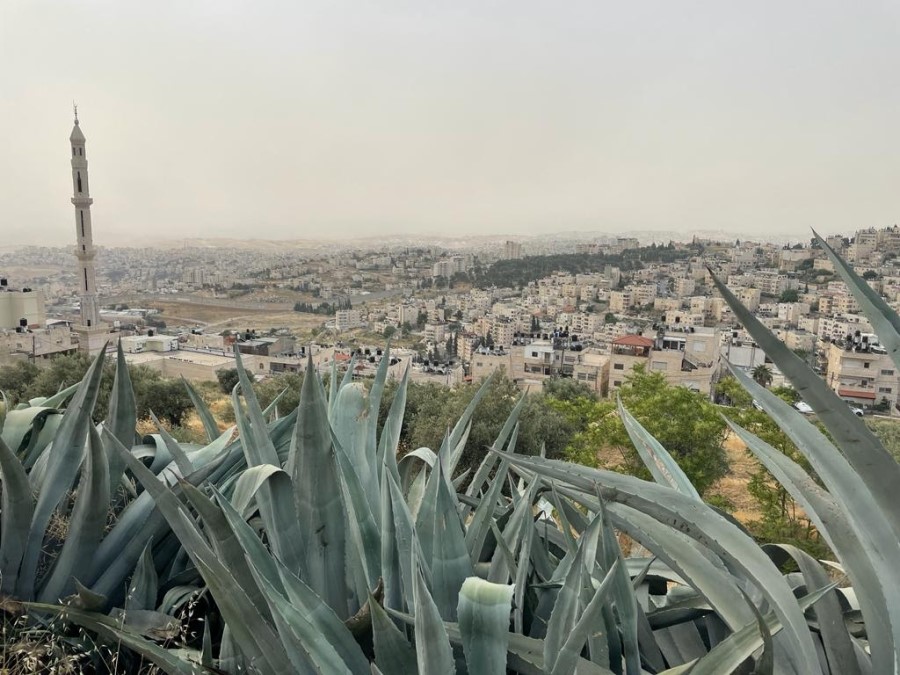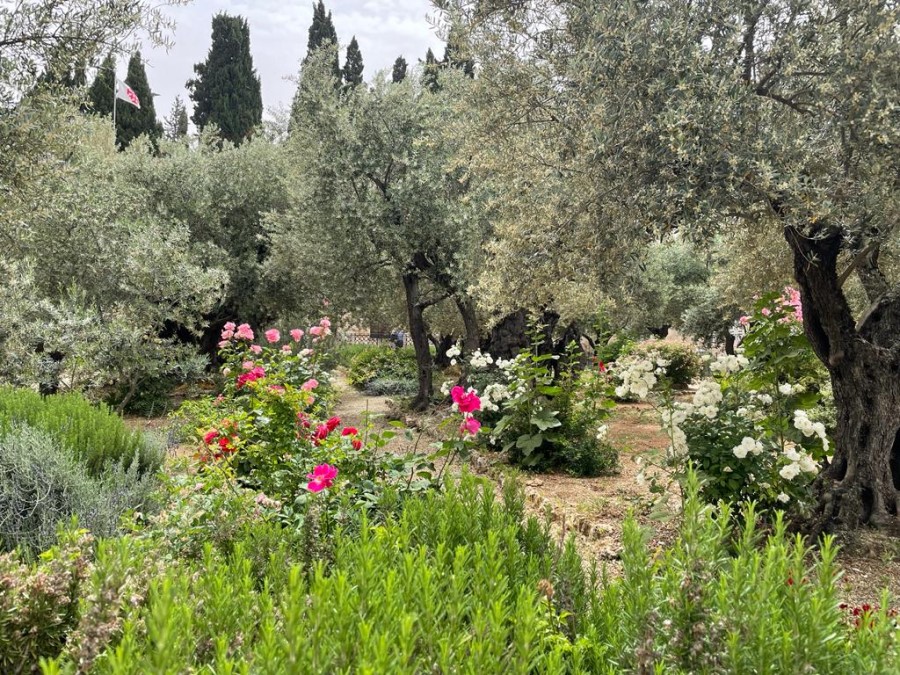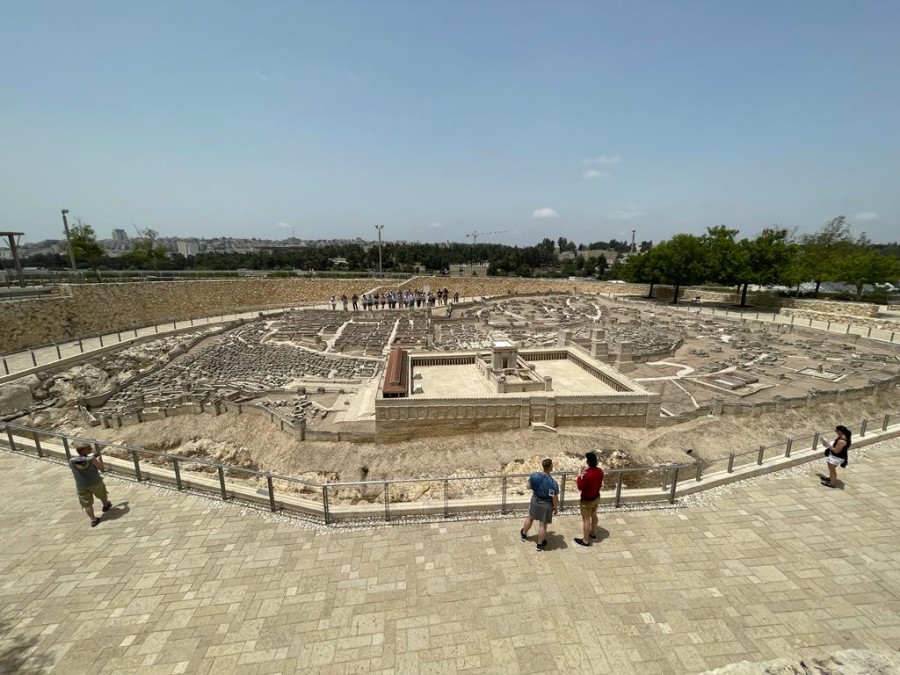Shalom!
Today was a breezy and much cooler day—perfect for finally getting to visit the Mount of Olives! Here are a few highlights from today:
Just east of Jerusalem across the Kidron Valley, the Mount of Olives (see cover photo) is taller than either hill of Old Jerusalem and essentially divides the Judean hill country from the Judean wilderness to the east. Many biblical events take place on or from the Mount of Olives, including: King David’s flight from Absalom (2 Sam 15:30), Jesus’ triumphal entry into Jerusalem (Mt 21:1-11), Jesus’ Olivet Discourse (Mt 24:1-25:46), Jesus’ Ascension (Lk 24:50-51; Acts 1:9, 12), and Jesus’ return (Act 1:10-11; Zech 14:3-5). Dr. G led us to a view from the back of the mountain looking toward ancient Bethany and Bethphage (first photo) and then from the front of the mountain looking toward Jerusalem (second photo).
As we came down the Mount of Olives toward Jerusalem, we stopped at the Garden of Gethsemane. The name “Gethsemane” comes from Aramaic and means “oil press,” likely indicating that the “garden” Jesus and his disciples visited was more specifically an olive grove with a press (Mt 26:36; John 18:1). There were a few olive presses at the base of the Mount of Olives in Jesus’ time, so there are multiple possibilities for the true site of Gethsemane today. We went to the traditional location that has slightly more historical attestation than the others. While the olive trees of the modern garden are old (transplanted by crusaders around AD 1100), they are probably not from Jesus’ time; the Romans besieging Jerusalem in AD 70 would have used up the olive trees of Gethsemane for campfires and siege machines. It was in Gethsemane, of course, that Jesus prayed in agony before his crucifixion and was betrayed by Judas (Mt 26:36-56).
During our afternoon, we visited the Israel Museum in West Jerusalem (i.e. outside the old city). Though the Israel Museum features much notable art and archaeology, we spent our time there focused on the detailed outdoor model of AD 67 Jerusalem (pictured), the Shrine of the Book (an exhibit dedicated to the Dead Sea Scrolls), and the archaeology of the land of Israel. In the archeological wing of the museum, Dr. G highlighted and gave historical context to a number of important archaeological finds, including: the Masseboth of Hazor (standing stones part of Canaanite pagan worship, cf. Josh 11:1-13; Judges 4:1-24), the Tel Dan Stele (fragment of a boastful 9th century BC proclamation from King Hazael of Syria in which he mentions King Joram/Jehoram of Israel and King Ahaziah of “the house of David,” cf. 2 Ki. 9:14-28), and the Tel Arad Holy of Holies (a sad testimony to syncretistic worship in the kingdom of Judah, cf. Josh 12:14; Judges 1:16).
That’s all for today! Tomorrow is our last day in Jerusalem and a free day. Therefore, Ema and I will be taking time to recharge and refresh; there will not be a post tomorrow. But, Lord willing, I will be back in two days reporting about our first foray into the Negev.
Lehitraot!





